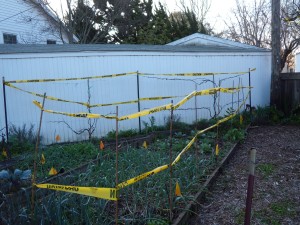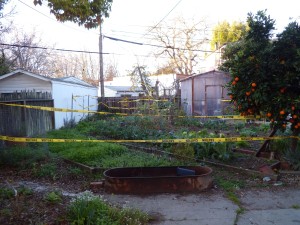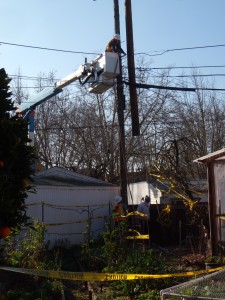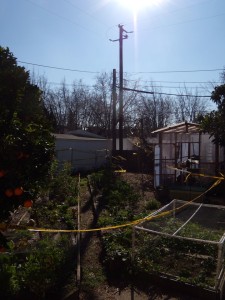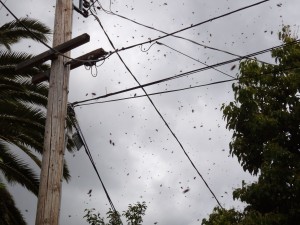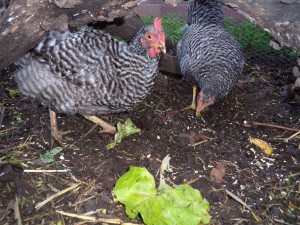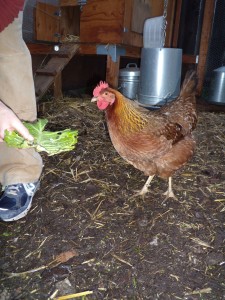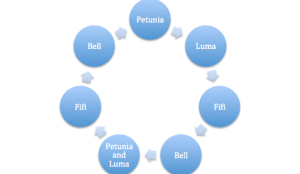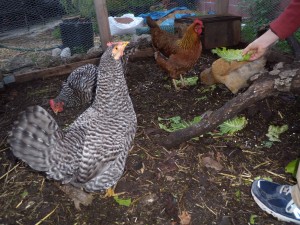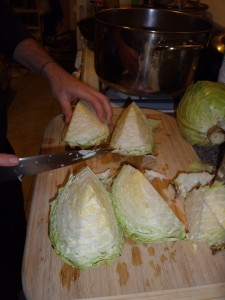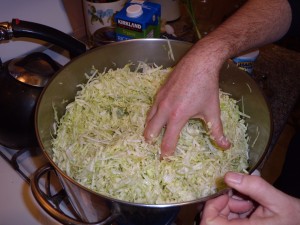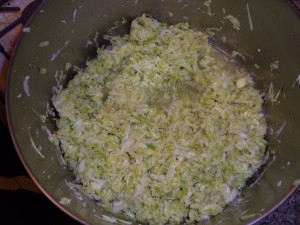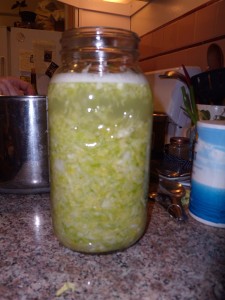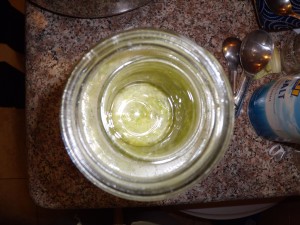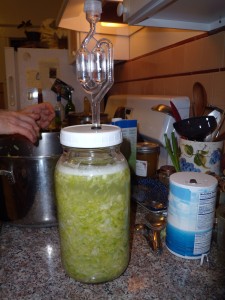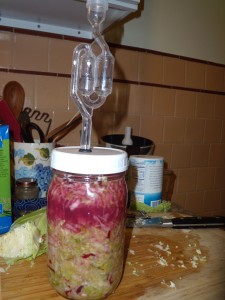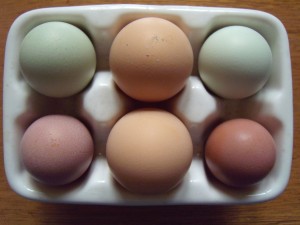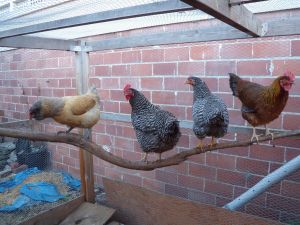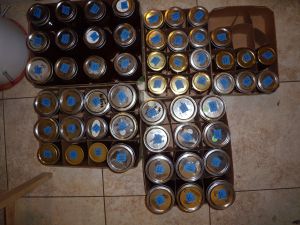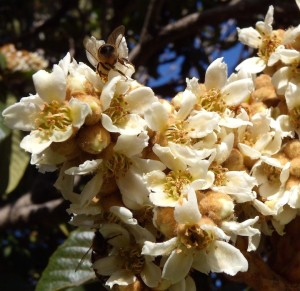Over the past two days a crew of workers descended on the garden, bringing with them an enormous crane, a cherry picker, good old-fashioned shovels, and soil tamping equipment. Basically, our worst nightmare.

Nothing quite like having an enormous crane toting a 50 foot pole high above your home and garden to make you feel tiny…
All the commotion is due to the utility pole in the far corner—a decrepit rotting beacon, frequented by woodpeckers and boasting over 60 years on the job, according to its weathered metal tag.
We’ve worried it would someday fall, weighed down as it is by high voltage wires, and leaning at a precarious angle. We’ve also worried that replacing it would wreak havoc on our precious growing things. And we’ve been particularly concerned about the grandmother fig tree just a few feet away.
The tree is almost more dead than alive, but each year it produces some of the best green figs we’ve ever tasted. With the help of a magnifying glass, we counted over 120 rings on a branch cut off several years back, before the tiny lines blurred in the last half-inch from the edge.
Who planted this tree, long before any of the houses on our block were built? This question continues to fascinate me, and I feel an especially ferocious urge to protect the tree.
Months ago, when PG&E started making noises about replacing the pole, I expressed my concerns to everyone in uniform I caught in the backyard. Of course, they all assured me that the tree would be fine, and of course I didn’t believe them.
Some of them also alluded to the fact that there is absolutely nothing I can do to stop them from conducting whatever work they deem necessary in that corner of the lot. This is true, and it’s an unpleasant reminder of how powerless we are when it comes to power line easements.
But we are fretful controlling types and tend to take action even at the risk of looking ridiculous. Early yesterday morning, Kelly procured a roll of bright yellow caution tape and we set about cordoning off…just about everything.
We tied the fig’s drooping branches back and strung tape around the raised beds, the grapes, the asparagus. When the crew arrived, we affected friendliness and gave them one last talking to. The young guy who had just hung his key ring on a delicate fig twig, snatched it away and (to his credit) marveled openly at the tree’s age. (I rounded up for that uncountable last half-inch of tree rings—Believe it or not, this tree’s 140 years old. Please be really, really careful!)
This morning, with a larger crew on-site and a gargantuan crane leering over the side fence, I was back at it with the foreman—I don’t mean to be paranoid, but does the crane operator know about the fig tree?
And then, like magic, an hour later the job was done.
The crane picked the new pole up off the street like a Tinkertoy and lowered it down exactly into the new hole—no wild swinging to and fro, no smashing the greenhouse to smithereens. The only knocks the fig tree endured were from the workers brushing past, and even then most of them dutifully ducked out of the way.
Only once did one of the men stoop under the caution tape to take a detour down a path between two raised beds. My hackles rose. I wondered if he would step in the leeks or the purple cabbage, or the spring onions, or the mustard. Then he saw that the way ahead was blocked by yet more tape, and he gave an audible grunt of annoyance, turned on his heel, and took the high road around the veggies.
I’d say we all weathered the new pole amazingly well and that it’s time for me to update my notions of what big equipment can accomplish in small spaces. What did I really think, anyway—that we would have a 50-foot pole swinging like a pendulum across the whole backyard?



